

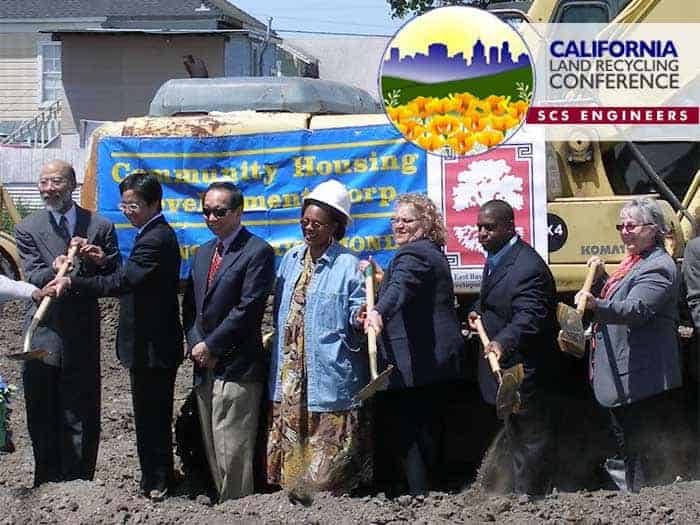
This year’s National Brownfields Conference in Detroit, Michigan, was notable. The evening before the conference began, the United States Environmental Protection Agency (USEPA) hosted an ‘Environmental Justice’ caucus in which over 150 people from both the public and private sectors came together to learn more about what Environmental Justice is and how it informs our work in economic development efforts.
USEPA defines Environmental Justice (often called ‘EJ’) as “the fair treatment and meaningful involvement of all people regardless of race, color, national origin, or income, with respect to the development, implementation, and enforcement of environmental laws, regulations, and policies.” We’ll achieve this goal when everyone enjoys the same degree of protection from environmental and health hazards and equal access to the decision-making process to have a healthy environment to live, learn, and work.
Distilled to its core, EJ is a call to action for all individuals and entities engaged in helping sustain and grow their communities. It posits that multiple demographics (including but not limited to people of color, inhabitants of rural areas, and people with less access to education and well-paying jobs) are disproportionately subject to harmful impacts from exposure to toxins and pollutants. Accordingly, it is incumbent upon those engaged with those populations to pay heed to find ways to mitigate or reduce those exposures.
EPA formally established the Office of Environmental Justice and External Civil Rights on October 6, 2022, and since that time, has engaged over 200 people across the agency to perform tasks specifically addressing EJ, including “processing grant applications from communities with environmental justice concerns, reaching out to residents to understand their concerns, and enforcing civil rights.” The EPA also established the Environmental Justice Thriving Communities Grantmaking (EJ TCGM) program in direct response to two Executive Orders issued by the Biden administration (EO 14008 and 13985) and will soon award ~$550 million to 11 distinct entities (which must be community-based nonprofits or partnerships between community-based nonprofits and either Tribal government or institutions of higher education) to spearhead more inclusive and easily accessible resources/support for communities seeking EPA funding to address EJ concerns.
EPA also established 16 technical assistance centers across the nation under the EJ Thriving Communities Technical Assistance Centers Program (EJ TCTAC), aimed at “providing technical assistance, training, and related support to communities with environmental justice concerns and their partners. The services provided will include training and assistance on writing grant proposals, navigating federal systems such as Grants.gov and SAM.gov, effectively managing grant funds, community engagement, meeting facilitation, and translation and interpretation services for limited English-speaking participants.”
Furthermore, the 2022 Inflation Reduction Act created the Environmental and Climate Justice Block Grant program in section 138 of the Clean Air Act (CAA). It provided EPA with $2.8 billion in grant funding for the program for projects to benefit communities with environmental justice concerns.
All told billions of dollars are currently available to communities that seek to spur environmental cleanup and revitalization efforts. SCS specializes in helping communities connect with this funding (even providing in-house Brownfields grant writing services) and has a proven track record of forming successful partnerships which result in timely and meaningful rejuvenation projects.
Two of the projects SCS teamed on this past year are awardees of the EPA’s prestigious 2023 Phoenix Award. The first of such projects, performed in EPA Region 6, involved the restoration of the historic First National Bank Building in downtown Oklahoma City, OK. This project created a mixed-use space, including apartments in the heart of the bustling business district, to help revive a struggling downtown and create jobs for residents. The second project, performed in EPA Region 9, provided affordable housing in San Diego, CA, and included upgrades to storm drains, water and sewer lines, underground powerlines, and streetscape improvements, significantly enhancing area infrastructure.
In both these projects and countless other projects performed under federal and state Brownfields programs, SCS is a trusted partner providing technical expertise and conscientious approaches to community engagement and planning that align with EJ protocols. SCS is a Foundational Member and Advisor of the Center for Creative Land Recycling (CCLR), which aims to turn abandoned land into thriving spaces that serve communities meaningfully.
This year’s Brownfields Conference theme was “Sustainable Communities Start Here,” in sync with SCS’s long culture and mission of achieving sustainability through holistic processes. The most successful remediation projects are when all stakeholders have a voice and redevelopment efforts are thoughtfully, creatively, and deliberately planned and implemented.
Additional Resources:
 About the Author: Rachel McShane, LEP, has over 15 years of experience in environmental due diligence projects (Phase I, II and III Environmental Site Assessments) as well as Brownfields redevelopment, risk-based corrective action, and remediation projects. She is also familiar with National Environmental Policy Act (NEPA) environmental assessments, vapor investigations and mitigation, radon, asbestos, and lead based paint surveys, and leachate monitoring/solid waste management. You may reach her at or via LinkedIn.
About the Author: Rachel McShane, LEP, has over 15 years of experience in environmental due diligence projects (Phase I, II and III Environmental Site Assessments) as well as Brownfields redevelopment, risk-based corrective action, and remediation projects. She is also familiar with National Environmental Policy Act (NEPA) environmental assessments, vapor investigations and mitigation, radon, asbestos, and lead based paint surveys, and leachate monitoring/solid waste management. You may reach her at or via LinkedIn.
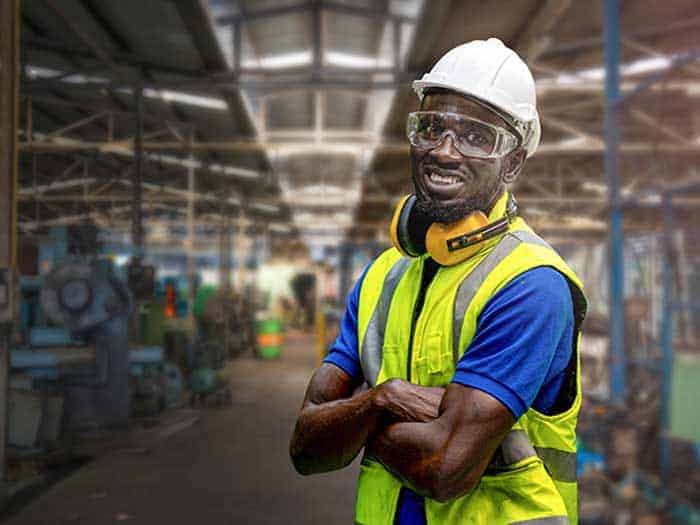
Worker Safety: “Focusing on worker safety can transform an entire organization and dramatically improve culture, quality, productivity, communication, and ultimately profits.” Paul O’Neill made this statement in 1987 when he took over as Chairman and CEO of Alcoa (Aluminum Company). When Paul finished his term as CEO twelve years later, Alcoa’s market value had increased from $3 billion to $27.5 billion, with net income rising from $200 million to just under $1.5 billion.
Paul joined Alcoa when it was in a state of decline, with failed product lines and an employee injury rate of 1.86 lost work days per 100 workers. At his first board meeting, he told investors he intended to make Alcoa the safest company in America and prioritize safety over profit. Many investors panicked and sold their stock, much to their later chagrin. He stated that Alcoa’s “…safety record is better than the general American workforce, especially considering that our employees work with metals that are 1500 degrees and machines that can rip a man’s arm off…” Paul focused on one key parameter to measure success, the number of daily safety issues. He commented on his strategy: “I knew I had to transform Alcoa. But you can’t order people to change. So I decided I was going to start by focusing on one thing. If I could start disrupting the habits around one thing, it would spread throughout the entire company.”
When a worker was hurt, Paul observed that they missed work for days to weeks to months, hampering productivity. His emphasis on having workers prioritize safety over efficiency paid off big time.
Remember the 1.86 lost work days statistic? He dropped it to 0.2 lost work days per 100 workers. By introducing a method of following safety procedures before every task, he implemented protocols for accountability, such as on-the-job work instructions, safety checklists, task management, and safety leaderboards. The process instilled a sense of a progressive and transformative safety culture in the workers. Only one year later, Alcoa reached a new record for its profits.
According to WorkClout, Paul’s influence not only increased Alcoa’s safety, productivity, and profit while positively affecting manufacturing. The number of annual fatal injuries in the manufacturing sector declined from 420 in 2003, to a low of 303 in 2017, and currently stands at 383 in 2021 (Bureau of Labor Statistics most recent data).
So how can you put proactive health and safety at the forefront of your business? Focus on non-monetary things, such as health and safety. Having workers engaged in safety affects everything down the supply chain. Try implementing these practical and positive recommendations in your workplace:
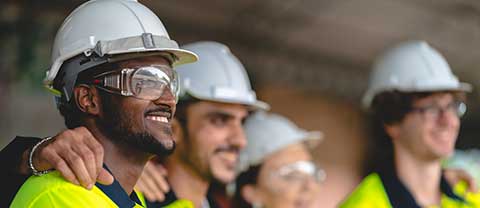
About the Author: Jed Douglas is a Certified Industrial Hygienist, a Certified Safety Professional, and a Professional Geologist, licensed in California, Oregon, Washington, and Arizona.
Mr. Douglas specializes in the health and safety of workforces. He performs indoor air quality investigations for chemical, physical, and biological contaminants, sound and noise studies, hearing protection program, ergonomic evaluation, Occupational Safety and Health Administration (OSHA) program compliance, chemical usage evaluation, global harmonization system implementation, confined space evaluation, lock-out/tag-out review, security auditing, emergency response plans and evacuation drills, respiratory protection program and fit testing, and training in various safety protocol. Reach out to Jed here or on LinkedIn.

Many companies are exploring carbon capture and sequestration (CCS) to help reach greenhouse gas emission reduction goals. Protecting aquifers is a primary concern for the public to safeguard underground drinking water sources. Starting with near-surface background environmental monitoring is the first step to addressing public concerns and maintaining safety.
A comprehensive monitoring plan helps preserve the safest conditions and can save time and expense during injection and post-closure care. This SCS Engineers webinar explains the concepts, how it protects aquifers, and what to look for in a background monitoring plan. Establishing baseline conditions before injection is the first step. Starting immediately after submitting the Class VI permit application, during the regulatory technical review period provides the time to take these important baseline measurements.
 Dr. Charles Hostetler, with nearly four decades of experience as an engineer and hydrogeologist protecting aquifers, explains why near-surface monitoring is important to meet demands for addressing environmental concerns during the design and operation of a CCS project. His expertise helps protect aquifers and save time during the design, build, and operation of CCS wells through closure.
Dr. Charles Hostetler, with nearly four decades of experience as an engineer and hydrogeologist protecting aquifers, explains why near-surface monitoring is important to meet demands for addressing environmental concerns during the design and operation of a CCS project. His expertise helps protect aquifers and save time during the design, build, and operation of CCS wells through closure.
Learn from nationally-recognized instructors at the Compost Research & Education Foundation’s Compost Operations Training Course (COTC), September 11-15, 2023, at Booth Labs, NC State University, in Raleigh, North Carolina.
The COTC provides in-depth training from nationally-recognized instructors, and provides practical experience through hands-on activities. Content is continuously updated to reflect location conditions and up-to-date industry practices. Attendees can also tour local facilities to see theories put into practice. The Training is intended for anyone who needs comprehensive instruction on commercial-scale compost production and marketing, including compost facility managers (municipal, commercial, or farm), environmental and agricultural consultants, regulators, and equipment vendors. This week-long course provides the knowledge needed to run a composting facility successfully.
The mission of the Compost Research & Education Foundation is to advance composting technologies, practices, and beneficial uses that support resource conservation and economic and environmental sustainability. The CREF is a nonprofit 501(c)(3) organization.

North American developers and contractors are well aware of the high costs associated with transferring soil from developments. These costs only increase when some or all of that soil contains regulated contaminants such as petroleum hydrocarbons or metal concentrations. Due to past activity on properties, soil contaminants can test above safe background levels.
Keith Etchells discusses assessing and managing regulated waste soil and “clean” or inert soil to avoid additional expenses, risks, and delays when moving soil on your project is necessary. Using his expertise and California regulations as context, he covers the regulatory framework and legal requirements regarding proper soil transport and disposal, with best practices to avoid risk and liability.
Proper Planning – From Phase I ESA to Soil Sampling to Soil Management Plan
The California Water Code and Titles 23 and 27 of the California Code of Regulations are often interpreted to mean any soil with detectable concentrations of hazardous substances or metals above interpreted background levels as a “waste” upon excavation and export from a job site.
Based on the characterization of exported soil as waste, developers must discharge it to a waste management unit licensed and permitted for treatment or a disposal facility. These select facilities treat, store, dispose of, or reuse soils under appropriate local, state, and federal regulations.
Proactively and efficiently complying with regulations and minimizing the risks of improper disposal helps avoid project delays and uses a progressive assessment process. Assessment starts with completing a Phase I Environmental Site Assessment (ESA) report to identify the recognized environmental concerns (RECs) that may exist. Move to a second step if a Phase I ESA report indicates RECs or environmental concerns of possible soil impact.
What Constitutes Hazardous Waste?
Using soil sampling and analyses, complete a Phase II ESA. The findings of the Phase II ESA may indicate the presence of soil impacts from chemical constituents such as petroleum hydrocarbons, solvents, and pesticides.
Additionally, naturally occurring metals such as arsenic can be elevated from regional geologic sources at levels that exceed regulatory screening levels and disposal standards. Are these hazardous wastes? That depends on the concentrations and elevations of the chemical constituents or metals in the soil. Properties with previous land use often show concentrations of these constituents below hazardous waste levels but high enough to designate certain soils as regulated “non-hazardous” waste. Dispose of or recycle this waste at a properly licensed facility.
Whether profiling waste soil for off-site disposal at a licensed receiving facility or characterizing the extent and composition of ”clean” or inert soil for transportation to another nearby construction site that needs fill soil, guide the process and action using the soil sample collection and analyses for various constituents of concern. These are identified in the Phase I ESA report to facilitate approval for the various soil waste types at the appropriate disposal facilities.
Waste Profiling Data Requirements
Most landfill and treatment facility operators generally want waste profiling completed with no more than a year-old data. However, justifications can be made for using older data if it demonstrates that the soil samples still represent current site conditions. Proper design and completion of soil sampling plans by qualified professionals should provide sufficient data to answer important questions:
If you need to move clean soil:
Minimizing Cost Overruns and Project Delays
Early characterization of contaminated and inert soil provides much more confidence in disposal cost ranges used in project planning. Characterization also helps determine the feasibility of disposal strategies to limit the exported amount of impacted soil. They minimize potential litigation associated with toxic tort and improper waste disposal practices.
While some contaminants may not be present in concentrations below applicable screening levels, any detectable chemical constituents or metals above background concentrations are regulated waste, which costs more to export. Facilitating better communication between the selected grading contractor and your trusted environmental consulting company facilitates earlier soil characterization. Waiting until grading starts to test soil can cause project delays and increase the cost of rushed laboratory analyses and unexpected additional disposal costs to meet construction schedule needs.
With the help of your environmental consultant and consultation with design and construction team members, you can employ value-added strategies to reduce soil disposal costs. When requiring soil export on a job, one strategy involving soil with relatively low levels of contaminants below human health risk screening criteria but still considered a regulated waste entails the preferential reuse or burial of that soil on site.
Soil Reuse – Savings and a Lower Carbon Footprint
Reuse typically results in significant savings since it allows the preferential disposal of inert soil as opposed to the costlier disposal of impacted soil. This can be completed if the limits of the impacted soil versus inert soil are adequately delineated through prior soil sampling and analysis, which provides the confidence of knowing which soils are inert and which soils are impacted when it comes time to grade and export soil.
A qualified environmental professional with a proven background servicing the construction sector will guide you through the nuances of applying the appropriate regulatory guidance. These professionals can design various strategies to reduce soil disposal costs, often covering the cost of soil sampling and analysis while providing additional risk management and liability protection to your project.
The Benefits of a Soil Management Plan
The Soil Management Plan covers all aspects of properly handling and managing waste soils during development. Your consultant works with your design and, or construction team to develop the feasibility of soil management strategies best engineered to reduce soil disposal costs.
During the grading process, the environmental professional oversees the Soil Management Plan during the movement of impacted soil to minimize environmental risks from improper disposal during grading. Improper disposal can result in costly fines or recourse from an import site. Your project professional and plan will minimize delays that would otherwise result from the discoveries during grading of previously unknown soil impacts, such as underground fuel tanks or previous dumping areas.
Environmental oversight during grading and having a soil management plan in place are often required with regulatory oversight, whether through voluntary oversight programs or when regulatory oversight is a condition of obtaining a grading permit.
Clean Soil Export Considerations
Exporting fill material from a previously listed contaminated site may require local Regional Water Quality Control Board approval in California. Failure to properly assess whether these requirements govern your site could lead to costly fines from your state. The receiving facility may also need Regional Board approval. In my experience, the land owner and contractor could face liability in both scenarios.
Documentation for Large Developments
SCS Engineers supports a large infill development project requiring more than a million cubic yards of clean fill to achieve the final grade. Using a project-specific environmental and geotechnical import specification, we’ve identified potential sources from nearby construction projects and supply facilities to meet import requirements. It details the number of soil samples and laboratory analyses based on design and regulatory standards.
Whether the export site provides soil sample analytical data or the cost of soil sampling an export site is taken on by our client, SCS reviews the soil analytical data before soil import for adherence to import specifications. A “Clean” or Inert Soil letter documents the vetting process and quality of the imported soil. The developer avoids the risk of project delays due to inadequate sources of clean soil available or increased costs associated with importing soil if finding an acceptable local clean fill source proves difficult.
The Fine Print – Additional Fees May Apply
For example, any generator site in California incurs hazardous waste generation and handling fees when disposing of five or more tons of hazardous waste soil within a calendar year. The current rate is $49.25 per ton. The state requires that generators maintain waste manifests for each truckload of exported soil and weight tickets associated with any hazardous waste disposal so it can register and report hazardous waste disposal quantities to the California Department of Tax and Fee Administration. Failure to register and pay these state fees results in auditing and significant penalty fees. The generator will often need a temporary Environmental Protection Agency identification number.
Environmental planning for developers is often a complex undertaking. We hope this article and its explanation of soil transfer details from an environmental professional will help keep your project on time and within budget.
![]() About the Author: Keith Etchells is a professional geologist and hydrogeologist with over two decades of experience assisting clients in managing environmental risks associated with the ownership, transfer, or operation of commercial, industrial, and waste disposal properties. Contact Keith if you have questions about soil remediation on LinkedIn or the SCS Professionals Directory.
About the Author: Keith Etchells is a professional geologist and hydrogeologist with over two decades of experience assisting clients in managing environmental risks associated with the ownership, transfer, or operation of commercial, industrial, and waste disposal properties. Contact Keith if you have questions about soil remediation on LinkedIn or the SCS Professionals Directory.
Additional Remediation and Planning Resources:
Meet SCS Engineers at the 2023 FECM / NETL Carbon Management Research Project Review Meeting, August 28-September 2, at the David L. Lawrence Convention Center in Pittsburgh, Pennsylvania.
Attendees will share knowledge and insights gained by more than 150 Department of Energy-sponsored research and development (R&D) projects from the Office of Fossil Energy & Carbon Management R&D programs, including Point Source Carbon Capture, Carbon Dioxide Removal, Carbon Conversion, and Carbon Transport & Storage. The National Energy Technology Laboratory is also a co-sponsor of the conference.
The FECM/NETL meetings will feature a mixture of plenary, multi-topic breakout, and interactive poster sessions to share research results and provide opportunities for discussion and collaboration on the research efforts, and they will be co-located with the United States Energy Association’s inaugural Carbon Management Technology Showcase (CMTS). (Note registration for the CMTS is separate from the registration for the 2023 FECM/NETL Carbon Management Research Project Review Meeting.)
Click for more FECM/NETL meeting details and registration information

Industries commonly have odor complaints, especially as suburbs encroach closer to a facility’s property boundary. Even when using scrubbers and other industrial treatment methods to eliminate odors, they can still cause nuisance problems for facilities.
To address this, environmental engineers compile processed meteorological data and odor complaint information to determine the best course of action to mitigate odor issues and create positive relations with the public.
How it Works
A large beef processing facility in Southern California has received increasing odor complaints from the public over the last five years. Enough that the courts ordered the facility to take action above and beyond what it was already providing. The engineers started by tabulating the complaints, including time, date, and supplemental information such as location, any noted comments, and findings from the regulator upon their inspection. In addition, they compiled all maintenance records from the facility and meteorological data from the adjacent airport to perform a detailed analysis of the odor problem.
By assigning each complaint with its wind speed and direction based on the logged complaint time, the engineers create a map and see that most complaints originated south of the facility when the wind blew from the north, indicating a high probability that this facility was indeed the culprit despite controls in place. Additional revelations included:
• Complaints are most common in the morning.
• All complaints are within the colder months.
• Higher wind speed mitigates odor complaints.
• Processing more cattle does not lead to more complaints, but longer processing hours may correlate.
• Scrubber maintenance reduces complaints.
Resulting Factors
Many factors contribute to odor complaints, but this assessment showed the strongest correlation when the facility performed scrubber maintenance. The scrubbers are control devices on the exit vents of the building that controls pollutants and odors leaving the facility.
Using the study results, the engineers can pinpoint recommendations to control odors. Out of all the recommendations, the simplest and most cost-effective recommendation is Option 1, to increase scrubber maintenance. Employ Option 2 if production is increasing. Options 3 through 5 are less desirable since they are more expensive or could hinder production schedules. Nonetheless, we list them so you have all of your options, as follows:
1. Perform more regular maintenance on the scrubbers, especially during the winter months.
2. Even though the system currently seems to be sized appropriately, get the scrubber manufacturer to upgrade the system if the facility increases production.
3. Install a meteorological tower on site and reduce or halt operations when the winds are slow, from the north, and in the colder months.
4. Add a deodorizing system south of the plant to inject an odor neutralizer in the air into the odor plume.
5. Construct a wind barrier or heavy-duty fans south of the plant to intersect and force more dispersion of the odorous plume.
Sustainable and Proactive Approach
The beef processing facility study determined quarterly maintenance should significantly reduce odors. Moving forward, the facility can refer to its SCS study if experiencing conditions that could increase the possibility of odors and, importantly, show regulators the facility takes a proactive approach to community concerns.
 Meet the Author: Jeffrey Leadford has 10 years of experience in the air quality field. His specialties include air dispersion modeling, emission inventory production, GIS mapping, and air monitoring. At SCS he creates emission inventories, reports, and runs air dispersion modeling on industrial sites in the Pacific Northwest. Mr. Leadford is a Professional Engineer licensed in Oregon, and received his Bachelor’s of Science degree in Chemical Engineering from the University of Colorado. He is also a licensed FAA Remote Pilot. Contact Jeffrey or your local resource at .
Meet the Author: Jeffrey Leadford has 10 years of experience in the air quality field. His specialties include air dispersion modeling, emission inventory production, GIS mapping, and air monitoring. At SCS he creates emission inventories, reports, and runs air dispersion modeling on industrial sites in the Pacific Northwest. Mr. Leadford is a Professional Engineer licensed in Oregon, and received his Bachelor’s of Science degree in Chemical Engineering from the University of Colorado. He is also a licensed FAA Remote Pilot. Contact Jeffrey or your local resource at .
Additional Resources:

Siamak Modarresi joins SCS Engineers in our Bellevue, Washington, office location as the newest member of our Environmental Services practice. Modarresi supports SCS’s Landfill Leachate and Industrial Wastewater Treatment teams throughout North America.
Modarresi earned his BS and MS in Chemical Engineering and obtained his Ph.D. in Environmental Engineering from the University of Washington. He has his PE in Chemical Engineering in California.
He most recently worked for a global sustainability firm providing design and project management for membrane bioreactor (MBR) treatment systems. This experience and knowledge translate as direct value to SCS’s clients, who face strict regulatory wastewater laws, emerging contaminants, and increasing costs for operational pretreatment systems.
Water fulfills critical functions in all industries, but much of the water results in industrial wastewater. Every effort is made to reduce water usage and treat wastewater to make it reusable or safe to discharge. Recycling wastewater is a feasible, cost-effective option. Newer, industrial water purification technologies that scale and are field-proven make it economically and environmentally feasible. Following treatment, wastewater can become an asset instead of a potential liability.
“SCS handles these complex projects, including developing pretreatment systems for FOG, ammonia, heavy metals, high-strength wastewaters and leachates, and mixed waste streams,” said Greg Helland, vice president, and the northwest region business director. “Membrane bioreactors treat high organic strength wastewaters, and anaerobic MBRs can provide a revenue source as renewable energy; that’s where Siamak’s industry expertise supplements our teams’ value.”
Additional Information and Opportunities
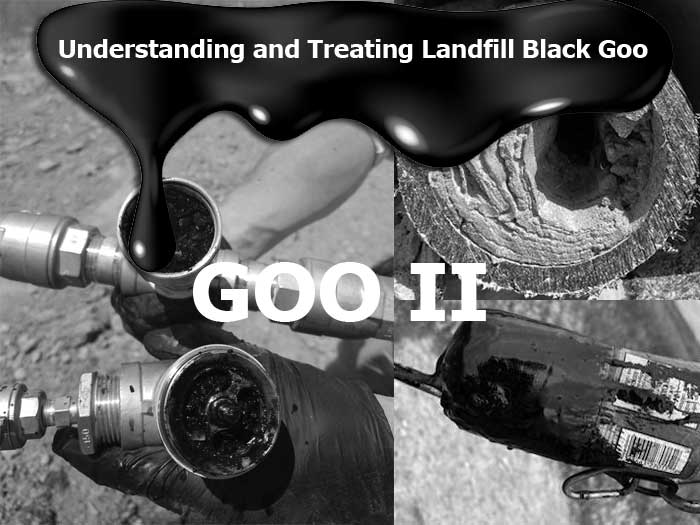
Landfills are experiencing a phenomenon called “black goo,” solids that make their way into leachate and gas collection systems, clogging equipment and impairing the management and extraction of leachate and gas. The viscosity differs between facilities, hardening like concrete or staying pliable. It attaches to pumps and check valves and settles in sumps, causing problems for leachate collection system cleanouts and landfill operations.
With funding from the Environmental Research & Education Foundation, Dr. Craig Benson will provide information from his team’s studies, and our panelists will discuss how goos move through waste into the infrastructure and how to remove it best. Ultimately this and a growing base of information will help us to prevent the goo problem from happening in the first place.
Who Should Attend and What You’ll Learn?
Goo II is for those in wastewater operations, landfill owners, operators, technicians, field personnel, engineers, and regulators interested in learning more about goos. We’ll cover these topics:
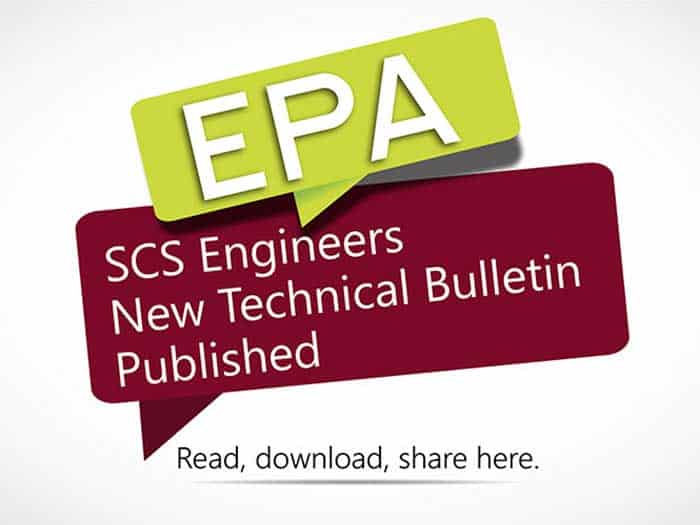
The proposed AERR rule would require nearly 130,000 facilities to report air toxics emissions directly to EPA. It would also give states the option to collect the air toxics data from industry (rather than states) and report it to EPA, provided the Agency approves their program. This proposed action would allow for EPA to annually collect (starting in 2027) hazardous air pollutant (HAP) emissions data for point sources in addition to continuing the criteria air pollutant and precursor (CAP) collection in place under the existing AERR.
Here are some key things to know about the proposed rule from the EPA website:
1. It would require air toxics (hazardous air pollutant) emissions reporting. While most states voluntarily report air toxics emissions data to EPA now, reporting is not consistent nationwide. The proposal would require many industrial facilities to report air toxics emissions data and offers states the option to report emissions on behalf of the industry sources in their states.
2. It would mean that more facilities must report emissions every year by using the same emissions thresholds every year to determine whether a facility’s detailed emissions information must be reported.
3. It would fill reporting gaps for some portions of Indian country and federal waters. The AERR proposal would require industry to report emissions for certain facilities that operate in those areas and that currently are not reported.
4. It includes provisions to limit the burden on small businesses. The proposal includes flexibilities such as allowing certain small businesses to report a facility’s total air toxics emissions instead of detailed data and exempting many collision repair shops from air toxics reporting requirements.
5. It would provide EPA information that would help the Agency improve its estimates of emissions from prescribed fires. EPA is committed to helping communities and our federal, state, local, and tribal partners manage the health impacts of smoke from wildland fires, including prescribed fires. Prescribed fire is a land management tool that can reduce the likelihood of catastrophic wildfires by reducing the buildup of unwanted fuels.
Additional Resources: